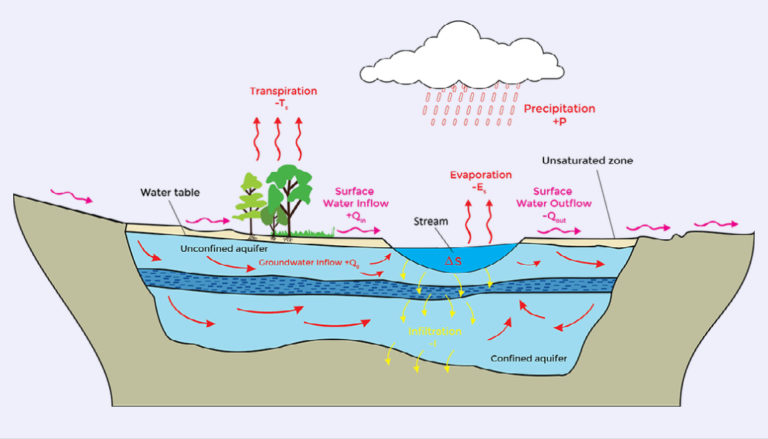FE Exam – Water Quality Parameters
Polluted water can create major issues for humans and the natural world. Therefore, monitoring water quality is crucial to identify potential environmental problems and to develop effective preventative strategies and appropriate water treatment techniques.
As we prepare for the FE Civil or FE Environmental Exam, we must understand the main indicators of water quality and their primary parameters must comply with standards. Expect to get tested on this topic as you prepare to take your FE exam.
There are four major properties that describe water quality. These are:
- physical
- chemical
- microbiological
- radiological
The table below shows a breakdown of each water quality indicator/parameter placed in the respective category.
| Physical | Chemical | Microbiological | Radiological |
| Turbidity | pH | Bacteria | Uranium |
| Temperature | Acidity | Algae | Radium |
| Color | Alkalinity | Viruses | Cesium |
| Solids | Chloride | Protozoa | |
| Taste and odor | Chlorine residual | E. coli | |
Electrical conductivity (EC) | Sulfate | ||
Nitrogen | |||
| Phosphorus | |||
Fluoride | |||
| Iron and manganese | |||
Copper and zinc | |||
| Hardness | |||
Dissolved oxygen | |||
| Biochemical oxygen demand (BOD) | |||
| Chemical oxygen demand (COD) |
Each category will have principal indicators. We will consider the top seven indicators for determining water quality:
Temperature
Temperature is a measure of the average kinetic energy of water molecules. The temperature influences:
- amount of oxygen that can be dissolved in water
- rate of photosynthesis by algae and other aquatic plants
- metabolic rates of organisms (breaking down food into energy)
pH
pH measures how acidic or basic (alkaline) the water is. It is defined as the negative log of the hydrogen ion concentration (-log[H+]).
- The pH scale is logarithmic and goes from 0 to 14.
- As the pH decreases, water becomes more acidic. As water becomes more basic, the pH increases.
- Many chemical reactions including the cellular metabolism aquatic organisms need to survive and grow require a narrow pH range.
- High pH levels result in physical damage to gills, fins, and exoskeletons.
- Extreme changes in pH effects the concentrations of other substances in water to a more toxic form. For example, low pH levels (below 6) increase the amount of soluble mercury in water. Extremely high pH levels convert non-toxic ammonia into a toxic form of ammonia.
Dissolved Oxygen (DO)
This is the amount of oxygen dissolved in water.
- Most aquatic organisms need oxygen to survive and grow.
- Some species require high DO such as trout and stoneflies.
- Other species do not require high DO, like catfish, worms and dragonflies.
If there is not enough oxygen in the water the following may happen:
- Death of adults and juveniles
- Reduction in growth of aquatic organisms
- Failure of eggs/larvae to survive
- Change of species present in a given waterbody
Turbidity
Turbidity is the cloudiness of water. Experimentally, it is the measure of the ability of light to pass through water. It is caused by the amount of suspended particles in the water.
- Suspended solids may be in the from of sediments, organic matter, clay, silt and other particulates.
- Since turbidity depends on the amount of suspended sediment, it can be an indicator of erosion, either natural or man-made.
- These suspended sediments can clog gills of fish.
- Once these sediments settle, they can foul gravel beds and destroy fish eggs.
- The sediments can also carry pathogens, pollutants, and nutrients.
Electrical Conductivity/Salinity
Dissolved ions in water increase salinity as well as conductivity, making the two measures related.
Conductivity is the ability of water to conduct an electrical current, and the dissolved ions are the conductors.
- The major positively charged ions are sodium, (Na+) calcium (Ca+2), potassium (K+) and magnesium (Mg2+).
- The major negatively charged ions are chloride (Cl–), sulfate (SO4-2), carbonate (CO3-2), and bicarbonate (HCO-3).
Salinity is a measure of the amount of salts in the water.
- The salts in sea water are primarily sodium chloride (NaCl).
- Some lakes have high salinity due to a combination of ions including sodium, chloride, sulfate, and carbonate.
Hardness
Hardness occurs when water has high mineral concentrations. These dissolved minerals in water can create scale deposits on hot water pipes. Also, if you shower with “hard” water, you will find it difficult to produce a lather with the soap you are using.
- Hardness is caused mainly by Calcium (Ca+2) and magnesium (Mg+2) ions. These positively charged cations enter the water from limestone deposits.
- Generally, groundwater is harder than surface water.
The calcium and magnesium hardness is the concentration of calcium and magnesium ions expressed as equivalent of calcium carbonate.
There are two types of hardness:
- Temporary hardness which is due to carbonates and bicarbonates can be removed by boiling
- Permanent hardness which remains after boiling is caused mainly by sulfates and chlorides
Water with more than 300 mg/L of hardness is generally considered to be hard, and more than 150 mg/L of hardness is noticed by most people, and water with less than 75 mg/L is soft.
Solids
Solids in water can be either in suspension or in solution. If you take a glass fiber filter and allow water to pass through it:
- The suspended solids remain on the filter
- The dissolved solids pass through the filter with the water.
If we take the water that passes through the filter, then allow it to evaporate. Some residue is left over. This is the total dissolved solids.
Total Solids = Total Dissolved Solids + Total Suspended Solids
We have created a complete definition list describing ALL the water quality parameters listed in the table above. Sign up to get this PDF definition list directly to your inbox!









